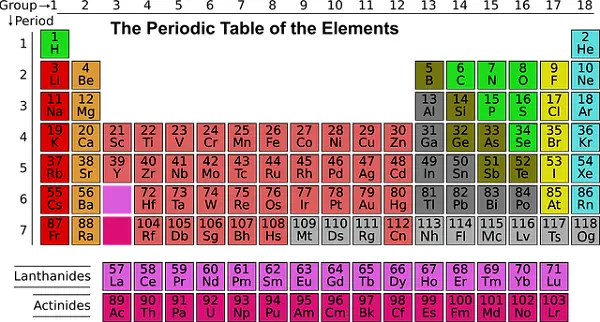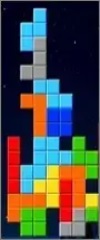- Home
- Better Memory
- Memory Systems
- Absorbent Learning
Absorbent Learning: Techniques to Gain More Knowledge & Remember It Afterwards
by Eric Travis (guest author)This article will teach you how to use the white space in your life to supplement Active Learning. Reading this article is an investment in yourself that will likely change your day-to-day learning efforts, and the way you view learning itself.
There are two types of learning: Active Learning and Absorbent Learning. Most people are familiar with Active Learning, but there is another, complementary path to knowledge: Absorbent Learning. Integrate this second learning mode in your daily routine, and you'll experience the powerful benefits of becoming an even better learner.

New Heights of Learning
Active Learning is when you specifically take time out of your day to do nothing but learn. You are actively learning when you read articles (like this one!), go to a class, do your homework, watch a documentary, or read a physical book. Active learning is supremely important in our lives, but it is oftentimes inconvenient and time consuming.
To actively learn by reading this article, you must sacrifice five minutes of your precious time, muster the motivation to scroll down the page, and have access to a device to read it on. Not easy, especially with your busy schedule.
In contrast, Absorbent Learning is learning done in your life's "white space." White space is any time in your day when you aren't critically thinking (think of times your hands may be busy but your brain isn't, e.g. your commute, your shower, walking the dog, etc.).
Why Use Your White Spaces for Learning?
The following is from my recent audiobook titled Wander Purposefully: A Reflection on How to Love Learning. In this excerpt, I dive deeper into why it is beneficial for you to choose certain white spaces in your day to engage in Absorbent Learning:
There are benefits to using our white spaces for things like silent introspection, contemplation, prayer, or meditation.
White space time is oftimes used to ponder the tough problems and questions in our lives. It is in these luminary moments where important life questions surface, are acknowledged, and are answered.
Nonetheless, I will be presenting you with learning methods that are designed to invade and utilize this white space to help you further yourself in ways that would be otherwise impossible.
I want to emphasize I am not telling you to utilize every white space of your day with my learning methods, but to choose to utilize them in certain white spaces of your day depending on your own, personal lifestyle.
It can be argued that by engaging in these methods, you will be introducing noise and distractions into spaces better left untouched. In my experience, nothing could be further from the truth.
By definition, meditation and the like occur within your own realm of experience. Therefore, you are meditating only upon what you already know, instead of discovering what you don't know. You are looking at the world through tunnel vision.
Over years of concentrated effort, I have amassed staggering foundations of knowledge. Because of this acquired knowledge, my mind is cantilevered to consider life's questions through lenses that include the peripheral vision required to experience epiphanies, and fully understand the bigger picture.
My learning methods allow those epiphanies to happen.
I am not saying silent introspection, meditation, prayer, and contemplation should be cast aside. They are necessary to our continued growth and happiness.
I'm saying the times I do engage in those activities have been enhanced by knowledge I have gained via the learning methods I will share with you. You can't schedule epiphanies, but you can make them more likely to happen.
By becoming a better learner, you can gain the knowledge and confidence you need to follow your own dreams, perhaps change your career, and become whatever you want to be, both personally or professionally. I am here to quiet your internal misgivings about the way you spend your time, and place you on the starting line of the trail of greater mental improvement.
My own learning evolved on a trail of my own. It was a hiking trail called the Pacific Crest Trail (PCT for short).

Author Eric Travis (R)
Sierra Nevada Mountains, near Mammoth
Pacific Crest Trail
The PCT runs 2,650 miles, starting in Mexico, winding through California, Oregon, and Washington, and finally terminating at the Canadian border. In contrast to everyone else who wants to hike (or has hiked) the PCT, I personally do not especially enjoy the great outdoors, nor do I specifically seek out solitary meditation.
I set out on this journey because it was an extraordinary learning opportunity (with a little help from modern technology). Throughout the entirety of the trail, I used the Audible app on my phone to listen to 71 audiobooks (averaging 12.5 hours in length), most of which were nonfiction, business, self-development books. Why I found myself hiking for over five months in the wilderness, gathering hours and hours of auditory knowledge - that is, the desire to start a business - is what sparked my original Absorbent Learning technique in the first place.
Absorbent Learning's Origins
When I was around 9 years old, my mom put a Periodic Table of the Elements on the underside of my brother's top bunk right above my face (one of my first "white spaces"). Over a couple years, I memorized the whole thing just looking at it every day when I woke up and when I went to bed. I still know it today.

When I was in college, I kept noticing how my mom's simple action continually benefitted me, even 10+ years later. Whether it was trivia nights or classes where the Periodic Table would randomly pop up, I'd look around and realize no one else knew what I knew.
People started thinking I was smart. I wasn't really that much smarter than anyone else: my mom simply made good use of my white space, allowing me to practice that particular subject for an inordinate amount of time.
After I began to see these benefits, I started intentionally learning in this way. I put up a laminated world map and a list of presidents in another white space: my shower. When I'm in my shower, I'm going through the physical motions of bathing, but my mind isn't doing anything particularly meaningful.
After a couple years of 10 minute showers, I now know every country and capital on earth and all the presidents in order. I also put up a list of how to say "thank you" in 50 different languages. Now, I know how to say thank you to pretty much everybody I meet.
Two Modes: Visual & Auditory
My PCT-motivating business idea was to take your individual learning goals, and place them on a visual poster product to engage with in the white spaces of your life. Just as I had done in my childhood and during college. I embarked on the PCT with the goal to listen to as many entrepreneurial books I could force into my ears, to increase my understanding of how to start a successful business.
I soon realized there was a connection between the "Visual" Absorbent Learning of my formative years, and the audiobooks I was listening to while struggling along the ludicrously lengthy PCT, what I dub as a form of "Auditory" Absorbent Learning. The connection was white space.
All of this bonus learning was occurring while I was engaged in something else, be it doggedly walking through a frozen forest or simply showering in my dorm room.
I even began to notice how I retained information via Absorbent Learning more successfully than the knowledge I gained throughout my education. After passing every test and class for my undergraduate engineering degree, I wouldn't remotely be able to pass a calculus test today.
Because I learned the material specifically to pass a test, my mind immediately forgot the information once it didn't need it anymore. However, I can tell you the 82nd element on the periodic table and say "thank you" to a native Kenyan in their own language.
Absorbent Learning: Easy to Get Started
The concept of activation energy accounts for Absorbent Learning's relative ease. Mentioned in chemistry classes, activation energy is the initial jolt of energy needed to catalyze a chemical reaction.
Because of daily repetition, Absorbent Learning is not only easier to retain long-term in comparison to scholastic learning, but it is also much easier to engage in.
For example, when I woke up after a night's rest on the PCT, the hardest thing for me to do was to get out of my cozy sleeping bag, and put on my stinky, wet hiking clothes. Three or four snooze alarms would often pass before I could psych myself up to do it.

However, once I summoned enough willpower to complete this first step, packing up camp was easy: I was cold, and the only way to warm myself up would be to keep moving.
My day could only start once I had mustered the initial jolt of activation energy by getting out of my sleeping bag. In life, people see (Active) Learning as a task requiring loads of activation energy to even begin. The only energy needed to Absorbently Learn is either to turn your shampoo-strewn face towards your learning materials, or to press play on your cell phone.
You never know how learning will serendipitously benefit your life. The extra learning you do within your white space may make a difference in job interviews or social situations (like meeting significant others).
I encourage you to engage in Absorbent Learning: choose to learn in certain white spaces of your life. By including learning in this white space time, your mind would no longer wander aimlessly. Your mind would wander purposefully. Through repetition, you would be spending your time learning things you would actually remember...
Check out the Wander Purposefully audiobook for more on the three types of Absorbent Learning (only two of which, Auditory and Visual, were revealed in this article).
About the Author

Eric Travis, October 2018, Rainy Pass, Washington,
Four days before finishing the Pacific Crest Trail.
Photo taken by Ian Tuttle, www.ituttle.com
Eric Travis is a project engineer based in Seattle, Washington, who thru-hiked the 2,650-mile Pacific Crest Trail in 2018 on a path of discovery, self-improvement, and entrepreneurship.
Eric holds a Bachelor's degree in Engineering and Master's in Business Administration from Gonzaga University in Spokane.
While on the trail, Eric listened to over 70 audiobooks and developed the concepts of his Absorbent Learning system. On returning from the trail, he wrote and narrated the audiobook, Wander Purposefully: A Reflection on How to Love Learning, available on Audible.com.
Published: 04/10/2020
Last Updated: 06/11/2020

Newest / Popular
Multiplayer
Board Games
Card & Tile
Concentration
Math / Memory
Puzzles A-M
Puzzles N-Z
Time Mgmt
Word Games
- Retro Flash -
Also:
Bubble Pop
• Solitaire
• Tetris
Checkers
• Mahjong Tiles
•Typing
No sign-up or log-in needed. Just go to a game page and start playing! ![]()
Free Printable Puzzles:
Sudoku • Crosswords • Word Search










